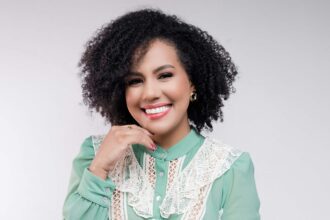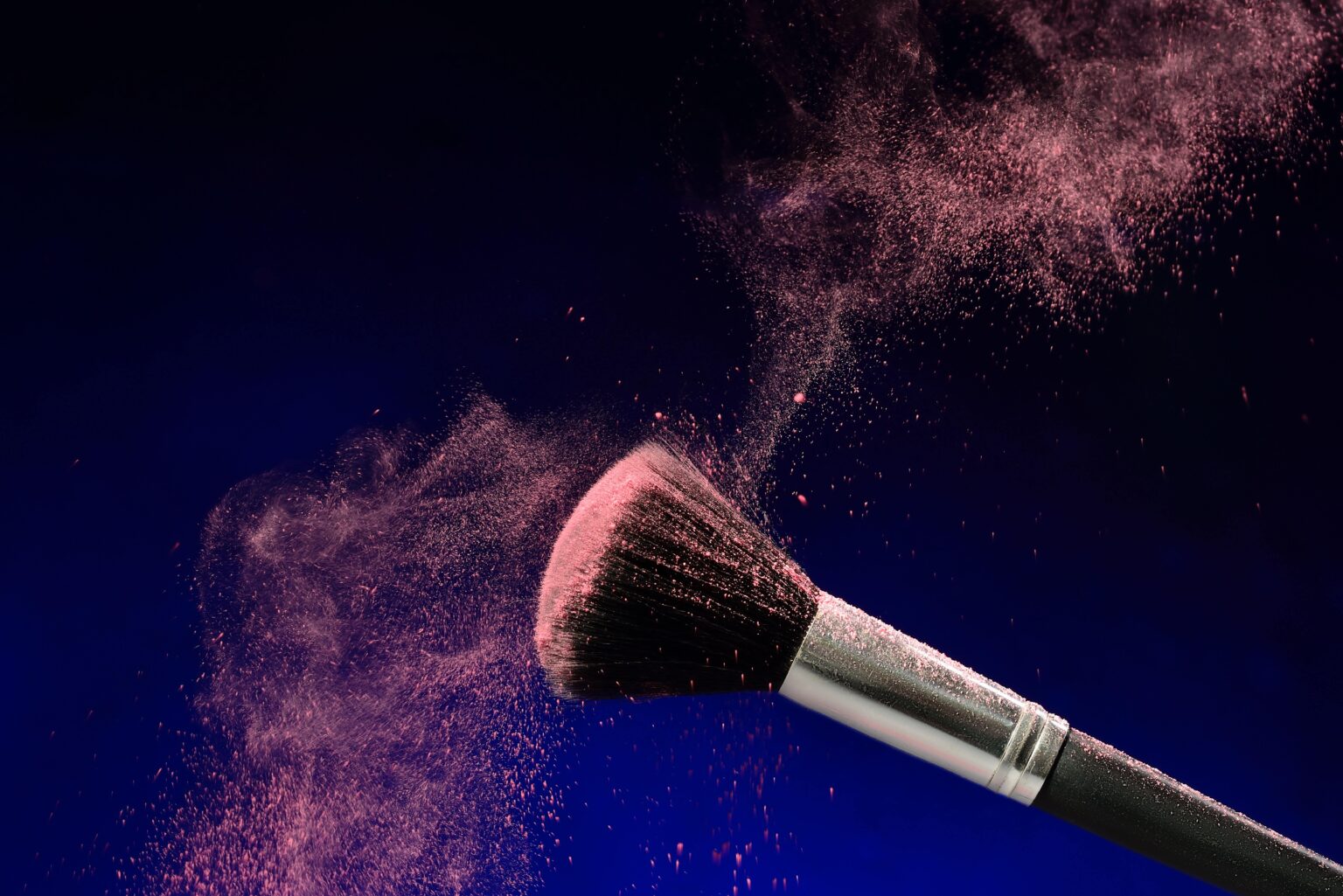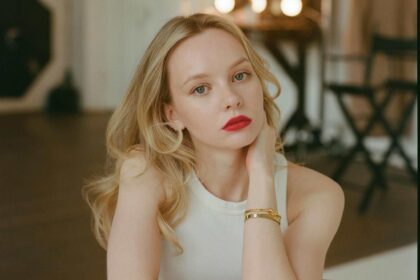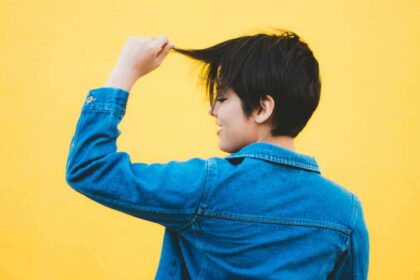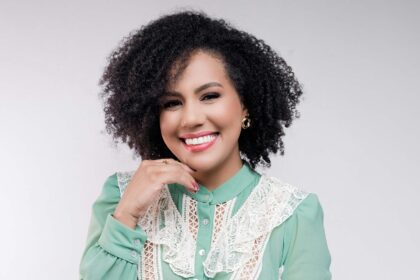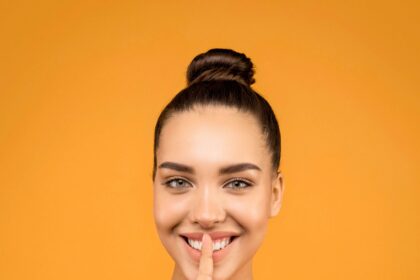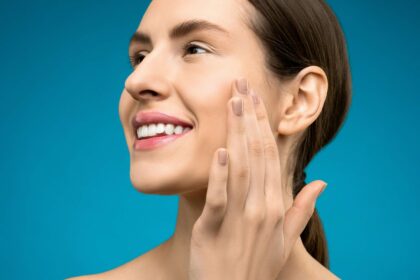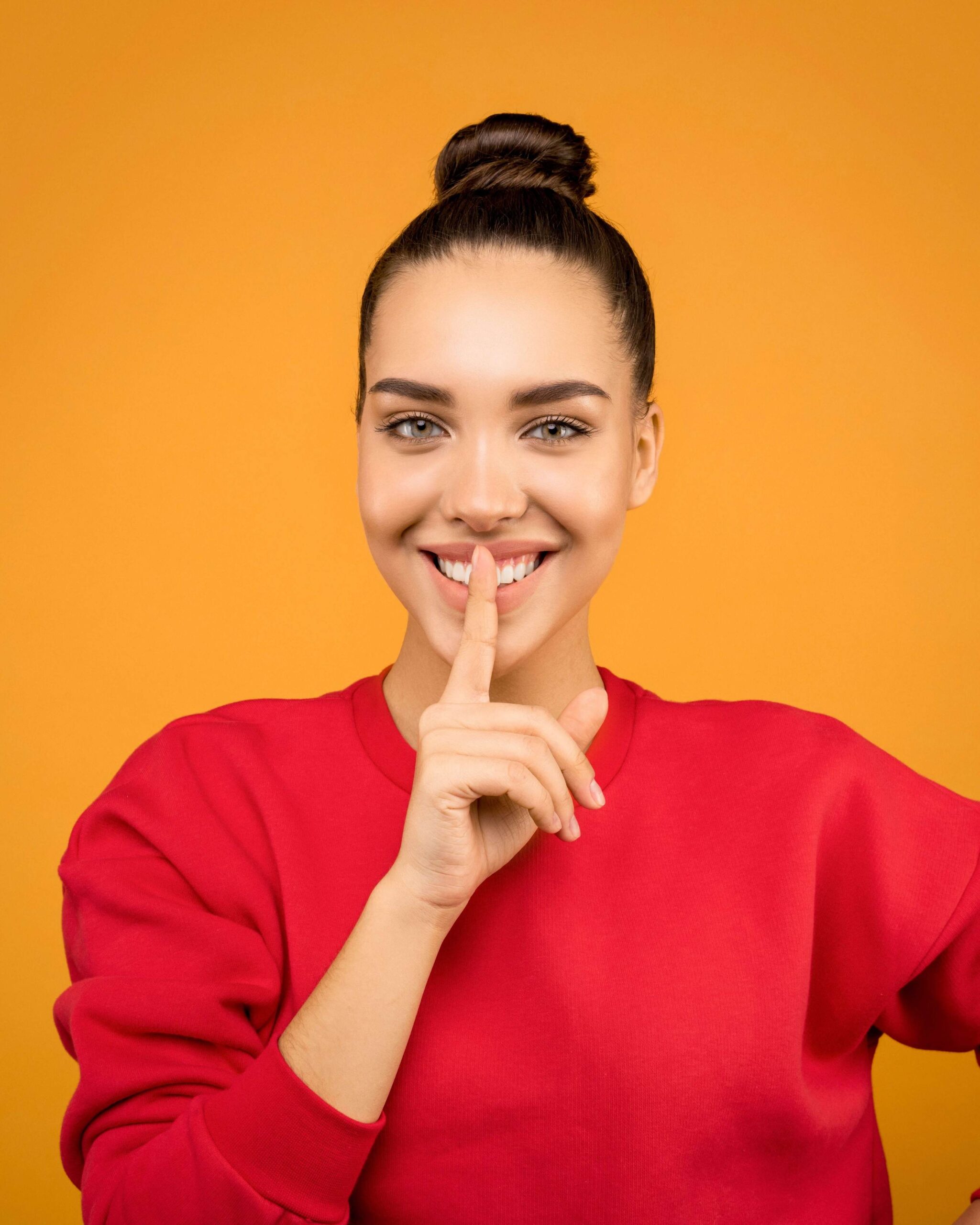So, What is makeup?
Hello beautiful!
Well, I say makeup is a tool that you can use to visibly and creatively express the beauty that lies within you.
Others say makeup is the cosmetic products like lipstick, foundation, eyeshadow, etc. that are applied to enhance or alter the appearance of the face or even other body parts.
Ultimately, the choice is yours to determine how you would like to use it. Just be sure that your choice to utilize these tools will always result in you feeling proud, uplifted, and empowered, not because you are changing who you are on the outside, but because you’re bringing who you are on the inside out.
Why is makeup used?
The most widely known and common use of makeup is often to accentuate facial features, even out the skin tone and texture, and create a particular desired effect. A desired effect could be that you want to make your eyes look alluring or to make them appear larger.
For example, let’s imagine that this morning you woke up appreciating sophistication. You would love to accentuate your eyes, lips, and cheekbones without drastically ‘changing’ your natural features or using bright or prominent colors. You begin imagining your outfit: a tan faux leather pencil skirt and a silk turtleneck with puffed sleeves. Your hair is delicately pulled away from your face, and your makeup… In this case, a ‘soft glam makeup look’ would be your ideal option. Your choice of makeup colors complements your outfit while making the features you’re most proud of stand out. This includes using dark brow colors, mascara, and lashes that complement your natural hair color and skin tone, light contouring, and subtle but complementary eyeshadow, blush, and lip color.
Other common uses of makeup
Some other ways makeup can be used include providing SPF protection, enabling creative expression, enhancing appearance for special occasions, preparing for photo shoots, and theatrical performances. In movies, you will often see the ‘no-makeup makeup look’ to create a natural appearance, while horror, thriller, and fantasy movies often utilize special effects makeup techniques.
What do you need to know before wearing makeup?
First things first
Step 1 – Your reason for wanting to wear makeup.
If you dislike something about yourself, I say stop right there.
Please know that you are enough and you’re beautiful just the way you are, despite the situation. Any attempt to use something outside of you to change yourself will not bring you the true happiness you seek. I say this because, I once thought I was not beautiful without mascara and was fearful of leaving my house without it, until I told myself that if I can’t love myself without it, It is poison to me and my well-being and I should stay away from it. And if others can’t love me without it, well for the sake of my ‘long-term’ well-being, I guess we were never meant to share our precious time together. I decided to use make-up as an expression of who I am, when ‘I felt like it’, not because I felt or thought it was something I ‘had’ to do.
Step 2 – What is your skin type?
Before purchasing any cosmetics be sure to identify and understand your skin type. Quality products are formulated to meet the needs of each skin type, and your results will vary based on the formula used on your skin.
How do you identify your skin type?
There are various skin types that we are born with. Over time, our skin can change for various reasons, including the natural aging process. We may experience different skin conditions due to factors such as hormonal changes, diet, environment, and stress. Skin conditions generally require treatment, while skin types require maintenance. Throughout the process, be sure to consult with your dermatologist to ensure maximum success when you’re ready to choose the right products for your skin type.
Dry skin
Key indicators of dry skin are when it lacks moisture and feels tight, especially after cleansing. Dry skin may appear dull, flaky, or rough, and fine lines and wrinkles may be more visible. Dry skin can be sensitive to harsh weather conditions.
Oily skin
Key indicators of oily skin include excess sebum (oil) production, giving it a shiny appearance, large pores, especially in the T-zone (forehead, nose, and chin), acne-prone, blackheads, and clogged pores. Oily skin can be resilient to aging due to its natural moisture.
Normal – Balanced skin
A balanced skin type that is neither too oily nor too dry and often has a smooth texture with small pores. It is rarely sensitive and generally not prone to breakouts.
Combination skin
This is a combination of oily and dry areas on different parts of the face. For instance, the T-zone (forehead, nose, and chin) tends to be oily, while the cheeks may be normal to dry. Combination skin requires different skincare approaches to target different areas.
Sensitive skin
Key indicators of sensitive skin are that it is easily irritated by skincare products, environmental factors, or certain ingredients. People may experience redness, itching, burning, or dryness. Sensitive skin requires gentle, fragrance-free products to avoid reactions.
Step 3 – Identifying your skin tone
I’m sure while wearing make-up a few goals of yours are to enhance your natural beauty and retain self-confidence, not diminish either of them. This is one major reason identifying your skin tone is essential for choosing the right makeup shades and skincare products. There are several methods to help you determine your skin tone, one of which includes:
The vein test – In natural light, take a look at the veins on the inside of your wrist.
If you see:
- Blue or purple veins: you likely have a cool skin tone.
- Greenish veins: you likely have a warm skin tone.
- Both blue and green veins: you might have a neutral skin tone.
Step 4 – Identifying your face shape and other facial features (optional)
It’s not mandatory to know your face shape or the shape of your facial features to apply makeup, however, it does give you an advantage as it relates to achieving your desired looks, choosing the right make-up application tools and techniques, knowing what styles will emphasize and flatter certain features and which ones won’t.
Step 5 – Develop a consistent skincare routine
Skincare is not only for those who wear makeup, it’s to be embraced by everyone at any age. For makeup wearers, properly cleansing your skin and removing makeup is crucial because sleeping with makeup on is very bad for your skin.
What is skincare
Skincare refers to your actions and the products used to maintain and enhance the health and appearance of your skin. It involves a daily routine that should include cleansing, moisturizing, toning, treatments, serums, and protecting the skin to keep it clean, hydrated, and shielded from environmental damage.
What is included in a skincare routine
It is best practice to develop a daily, customized morning and evening skincare routine. Customization would be based on your skin type, known skin conditions, concerns, and personal goals.
Some common skincare goals include:
- Clear Acne
- Reduce wrinkles and fine lines
- Even out skin tone
- Hydrate dry skin
- Control oily skin
- Soothe sensitive skin
- Improve skin texture
- Reduce pore size
- Achieve a healthy glow
Some personalized skincare goals include:
- Manage specific skin condition
- Preparation for a special event
- Seasonal adjustments
- Holistic skincare
- Sustainable and ethical skincare
An example of a basic skincare routine is as follows:
Morning
- Cleanser
- Toner
- Serum (e.g., Vitamin C)
- Moisturizer
- Sunscreen
Evening
- Cleanser (double cleanse if wearing makeup)
- Toner
- Serum (e.g., retinol)
- Moisturizer
Step 6 – What products and tools should you use when applying makeup
Now that you understand the basics you need to know before applying makeup, let’s discover some products and tools everyone can use when applying makeup.
Primer
Primer is a must-have in your makeup bag for every skin type. This magical mixture is used underneath eyeshadow, foundation, tinted moisturizer, and mascara to create a long-lasting base for your favorite makeup.
Benefits of a good primer include:
- Creates a smooth surface by filling in pores, fine lines, wrinkles, & other indentations in the skin. This creates an easy base to work with and an even finish on your final makeup look.
- Longer-lasting makeup with no shifting, creasing, or separation. Primers are great for those who wear their makeup all day.
- A mattifying primer can help reduce shine in the T-zone area.
- Some primers also provide a glowy effect and include extra skin benefits like hydration and moisturization.
APPLICATION: You apply your primer after your favorite morning skincare routine (usually after moisturizer) to prepare your skin for foundation.
Foundation
Foundation can be found in varying formats designed to cater to different skin types, coverage preferences, and finishes. One main benefit of foundation is that it evens out your skin tone. Options include:
Liquid
- Formula: A fluid formula.
- Coverage: Light to full.
- Finish: Matte, dewy, and satin.
- Ideal for: Most skin types, depending on the specific formulation (e.g., oil-free for oily skin, hydrating for dry skin).
- Apply with: Flat foundation brush, stippling brush, or beauty sponge.
Powder
- Formula: A dry, powdery formula.
- Coverage: Light to medium.
- Finish: Matte.
- Ideal for: Oily and combination skin types, as it helps control shine.
- Apply with: Kabuki brush, fluffy brush, compact sponge, or powder puff.
Cream
- Formula: A thick, creamy formula.
- Coverage: Medium to full.
- Finish: Dewy or satin finish.
- Ideal for: Normal to dry skin types, as it provides more hydration.
- Apply with: Flat foundation brush, stippling brush, or beauty sponge.
Mousse
- Formula: A whipped, airy formula that feels light on the skin.
- Coverage: Medium.
- Finish: Matte or satin.
- Ideal for: Normal to oily skin types.
- Apply with: Flat foundation brush, stippling brush, or beauty sponge.
BB cremes
- Formula: A multi-functional product that combines skincare benefits with foundation.
- Coverage: Light to medium.
- Finish: Natural or dewy.
- Ideal for: All skin types, depending on the formulation. Great for everyday wear.
- Apply with: Flat foundation brush, stippling brush, or beauty sponge.
CC creams
- Formula: Similar to BB cream but focuses more on color correction (e.g., reducing redness, dullness).
- Coverage: Light to medium.
- Finish: Natural or satin.
- Ideal for: All skin types, especially those with specific color correction needs.
- Apply with: Flat foundation brush, stippling brush, or beauty sponge.
Serum infused
- Formula: A lightweight, serum-infused foundation.
- Coverage: Sheer to medium.
- Finish: Natural or dewy.
- Ideal for: All skin types, particularly mature or dry skin.
- Apply with: Flat foundation brush, stippling brush, or beauty sponge.
Tinted Moisturizers
- Formula: A moisturizer with a hint of color.
- Coverage: Light.
- Finish: Dewy or natural.
- Ideal for: All skin types, especially dry and normal skin. Ideal for those seeking a minimal makeup look.
- Apply with: Flat foundation brush, stippling brush, or beauty sponge.
Stick foundation
- Formula: A solid, stick form of foundation that can be directly applied to the skin and blended out.
- Coverage: Light to full.
- Finish: Satin or matte.
- Ideal for: Normal to dry skin types; also great for on-the-go touch-ups.
- Apply with: Flat foundation brush, buffing brush, or beauty sponge.
Mineral foundation
- Formula: Made from natural minerals, often in loose or pressed powder form.
- Coverage: Light to full.
- Finish: Matte or natural.
- Ideal for: Sensitive or acne-prone skin, as it’s typically free from irritants.
- Apply with: Kabuki brush, fluffy brush, compact sponge, or powder puff.
Concealer
Also known as ‘cover-up’, it’s another great item to have in your makeup bag if you have breakouts, undereye discoloration, hyperpigmentation, or other skin discoloration. Concealers are also the go-to product for professional makeup artists to brighten the under-eye area and to contour the face.
To brighten your undereye, choose a shade that’s one to two shades lighter than your foundation. For the rest of your face, choose a shade that matches your foundation.
- Formula: Liquid, cream, stick, pencil, pot/compact concealer
- Coverage: Light to full.
- Finish: Matte, natural, satin, or dewy.
- Ideal for: Depending on the formula most skin types. Also great for on-the-go touch-ups.
- Apply with: Small dense brush, or damp beauty sponge.
Setting powder
Depending on the order you choose to apply your makeup, setting powder is either the transition point between your “wet” and “dry” products or adding your finishing touches. Using a setting powder after applying your foundation and concealer helps to create a smooth, long-lasting, dry surface to apply your next set of dry products like eyeshadow and blush.
Eye Shadow
Wearing eye shadow with your makeup isn’t mandatory, however, it creates so many opportunities for you to customize your look.
As a beginner, one of the simplest ways to build a diverse eyeshadow collection is to invest in eyeshadow palettes. Palettes are often designed with various shades that complement each other, making it easier to create cohesive eye looks reducing the guesswork for those new to makeup. They’re also travel-friendly and budget-friendly.
Challenges with applying eyeshadow
A common challenge with applying eyeshadow is that once applied to the skin, it’s not as vibrant or “true to color” as it appears in the eyeshadow palette. Another makeup artist’s secret to overcoming this challenge is using an eye shadow primer or your favorite concealer as a base to help your eyeshadow be more vibrant and last all day.
- Formula: Gel, powder, glitter
- Shades: Neutrals to bold colors.
- Finish: Matte, satin, shimmer, metallic.
- Ideal for: Depending on the formula most skin types.
- Apply with: Flat shader brush, blending brush, crease brush, smudge brush, pencil brush, angeled brush, large fluffy brush.
Blush
Blush should be in every lady’s makeup bag, This single item is used to add life back to the face. Remember when we said foundation evens out your skin tone? We all have natural hues of pink or red in our skin that are hidden by foundation resulting in us looking “pale”. A little blush on the cheeks quickly brings that youthful, healthy glow back.
- Formula: Cream, powder, stick, gel, baked, liquid, mousse, mineral, stain/tint
- Finish: Matte, satin, shimmer, dewy, natural, radiant, sheer, metallic.
- Ideal for: Depending on the formula most skin types.
- Apply with: Depending on the formula, a large fluffy brush, beauty sponge, stippling brush, or your fingers.
- Tips for applying blush: smile while applying, blend well for a natural look, start with light application, and build up the color gradually (layer)
Mascara
Mascaras are the ideal tool to bring any makeup look together. Depending on the color, once applied to the lashes mascara darkens your lashes creating a frame around the eyes making them the focal point of the face. It’s best to wear a mascara that closely matches the color of your natural hair. Various mascaras are formulated to help you meet your individual goals and are applied after all other steps are completed.
- Formula: Lengthening, volumizing, curling, defining/separating, waterproof, tubing, gel, fiber, lash conditioning, colored.
- Shades: Black, brown, clear, and bold colors.
- Ideal for: Choose a formula based on your needs. If your lashes are naturally short, you may benefit from a lengthening formula.
- Tips for applying: Layer for more dramatic effects, wiggle at the base to separate lashes, use an eyelash curler, and replace them regularly.
Brows
Did we forget something?
Eeek! Your eyebrows, the “frames” of the face can be done first or last, whatever you prefer. I prefer to do them first so that I have somewhere to rest and stabilize my hand for this big job.
Know that you “can” draw a semi-permanent emotion on your face during this step. Honestly, poorly done brows will ruin any make-up application, so be sure to invest your time in doing this well and choose the right tools for your specific needs.
Brow pencils
- How it works: Thin pencils used to draw and fill in eyebrows.
- Benefits: Precise application, great for mimicking hair-like strokes, defining and shaping brows.
- Ideal for: Sparse brows needing detailed filling and shaping.
Brow powders
- How it works: Powder formulas used to fill in brows.
- Benefits: Natural, soft finish, great for filling in larger areas, easy to blend.
- Ideal for: Those with fuller brows who want to enhance their natural shape.
Brow gels
- How it works: Gels that come in clear or tinted formulas.
- Benefits: Holds brow hairs in place, adds color and volume, provides a polished finish.
- Ideal for: Setting brows in place, adding volume and definition.
Brow pomades
- How it works: Creamy, pigmented formulas used to define and shape brows.
- Benefits: Long-lasting, waterproof, creates bold and defined brows.
- Ideal for: Creating dramatic, defined brows with a strong hold.
Brow pens/markers
- How it works: Liquid or felt-tip pens designed to create hair-like strokes.
- Benefits: Precise application, long-lasting, ideal for creating natural-looking hairs.
- Ideal for: Sparse brows needing detailed and realistic filling.
Brow wax
- How it works: Waxy formulas used to shape and hold brows in place.
- Benefits: Provides strong hold, tames unruly brow hairs, can be used alone or with other brow products.
- Ideal for: Controlling and setting brows, especially for those with thick or coarse brow hairs.
Brow stencils
- How it works: Pre-shaped templates to guide brow filling and shaping.
- Benefits: Helps achieve symmetrical and even brows, easy to use for beginners.
- Ideal for: Those looking for guidance in achieving a specific brow shape.
Brow kits
- How it works: Kits containing multiple brow products, such as powders, waxes, and tools.
- Benefits: All-in-one solution, convenient for comprehensive brow grooming, great for travel.
- Ideal for: Those wanting a complete brow grooming set in one package.
Lips
Just like eyeshadows, lip products create an abundance of opportunities for you to customize your look and there are lots to choose from.
Continuing with what we’ve learned about skincare earlier, this should also be practiced on your lips by regularly exfoliating and moisturizing.
Lip exfoliant
To remove dead skin, encourage cell turnover, increase absorption, and create a smooth surface for your lip balms, lipsticks, etc. be sure you exfoliate your lips every 1-2 weeks.
Lip balm
- How it works: Moisturize and protect your lips using SPF formulas.
- Benefits: Conditions lips, soothes dryness, and prevents chapping.
- Ideal for: Daily use to keep lips soft and smooth, alone or under other lip products.
Lip Treatment
- How it works: Formulas designed to hydrate, plump, or treat lips.
- Benefits: Nourishes lips with ingredients like vitamins, oils, and peptides.
- Ideal for: Repairing and rejuvenating dry or damaged lips, providing long-term hydration and anti-aging benefits.
Lip Masks
- How it works: Overnight or intensive treatments that deeply hydrate and repair lips.
- Benefits: Nourishes, softens, and smoothens lips while you sleep or as a quick treatment.
- Ideal for: Rejuvenating dry, chapped lips and providing intensive hydration.
Lip Primer
- How it works: Preps lips by creating a smooth canvas for lip products.
- Benefits: Extends wear time, enhances color payoff, and prevents feathering.
- Ideal for: Optimizing the application and longevity of lipstick and lip gloss.
Lip liner
- How it works: Pencils or twist-up sticks used to outline and define lips.
- Benefits: Defines lip shape, prevents feathering, and enhances lipstick longevity.
- Ideal for: Creating precise lip lines, preventing lipstick from bleeding, and customizing your lip color.
Lipstick
- How it works: Add color to your lips with pigmented formulas available in various finishes (matte, satin, glossy, metallic).
- Finish: Matte, satin, shimmer, dewy, natural, radiant, sheer, metallic.
- Benefits: Provides intense color, long-lasting wear, and can be moisturizing.
- Ideal for: Adding bold color and defining lip shape.
Liquid Lipstick
- How it works: Add color to your lips with liquid formulas that dry down to a matte or satin finish.
- Finish: Matte, satin.
- Benefits: Intense pigment, long-lasting wear, and transfer-resistant.
- Ideal for: Matte lovers who want long-lasting color without the need for frequent reapplication.
Lip Stain
- How it works: Add color to your lips with lightweight formulas that tint lips with long-lasting color.
- Finish: Matte, satin, dewy, glowy, sheer, metallic.
- Benefits: Provides a natural flush of color, lightweight feel, and long wear.
- Ideal for: A subtle, natural look that lasts throughout the day without needing frequent touch-ups.
Lip Tint
- How it works: Add color to your lips with lightweight formulas that provide a sheer wash of color.
- Finish: Matte, satin, velvet, cream, dewy, glossy, sheer.
- Benefits: Natural-looking color, lightweight feel, and often buildable coverage.
- Ideal for: A subtle hint of color that enhances natural lip tone and feels weightless on the lips.
Lip Gloss
- How it works: Sheer to medium coverage formulas with a shiny finish.
- Finish: Glossy, sheer, shimmer, cream.
- Benefits: Adds shine and dimension, hydrates lips, and enhances natural lip color.
- Ideal for: Creating a glossy, plump look and adding moisture to lips.
Makeup brushes
When I first started learning makeup artistry, I was told not to get too carried away by buying too many brushes. My response – “Why would I get carried away with brushes, they’re brushes?” ****Long pause. Trust me, you’ll get carried away.
Just like all other makeup products, there is an abundance of options with varying designs, shapes, colors, materials, textures, brands and so much more. However, there are a few multifunctional options available that simplify the decision-making process for you.
You can purchase brushes individually or in sets, the choice is yours. I love brush sets because they’re cost-effective and I gain access to certain brushes I may not have discovered on my own. On the other hand, I also love adding individual brushes to my collection as this gives me the freedom to choose unique pieces.
Below are the top 11 brushes every beginner should have in their makeup bags.
Kabuki brush
- How to use it: Apply and blend foundation, powder, and bronzer.
- Benefits: Dense bristles provide full coverage and a smooth, even finish. Great for both liquid and powder products.
Duo fiber brush
- How to use it: Apply foundation, blush, highlighter, and even cream products.
- Benefits: Combination of synthetic and natural bristles allows for a light, buildable application, and a flawless finish.
Angled brush
- How to use it: Contour, apply blush, and even fill in eyebrows with a small angled brush.
- Benefits: The angled shape makes it easy to apply products with precision, especially in the contours of the face.
Fluffy blending brush
- How to use it: Blend eyeshadow, apply highlighter, and set under-eye concealer.
- Benefits: Soft, fluffy bristles provide a seamless blend and can be used with powder products for a natural finish.
Tapered brush
- How to use it: Apply highlighter, set under-eye powder, and precise contouring.
- Benefits: Tapered shape allows for targeted application and blending in smaller areas.
Small domed brush
- How to use it: Blend eyeshadow, apply concealer, and highlight small areas.
- Benefits: Small size and domed shape are perfect for detailed work and precise application.
Spoolie brush
- How to use it: Groom eyebrows, blend eyebrow products, and separate lashes.
- Benefits: Versatile tool for taming and perfecting brows and lashes.
Flat eyeshadow brush
- How to use it: Apply eyeshadow to the eyelids with precision.
- Benefits: Flat, dense bristles allow for packing on color and provide a smooth, even application.
Smudger brush
- How to use it: Smudge eyeliner, apply eyeshadow along the lash line, and create a smoky eye.
- Benefits: Short, dense bristles are perfect for creating a smoky, diffused look.
Concealer brush
- How to use it: Apply and blend concealer, prime eyelids, and spot concealing.
- Benefits: Small, flat bristles provide precise application and smooth blending.
Lipstick brush
- How to use it: Precise application of lipstick, blend lip colors, and create defined lip lines.
- Benefits: Ensures even distribution of color, allows for precision in hard-to-reach areas, and enables layering for buildable coverage.
Brush cleaners
Developing and maintaining great hygiene practices throughout your makeup journey is necessary because dirty tools can and will attract bacteria.
I use a few things to clean my makeup and makeup application tools during and after use.
Paper towel
After applying makeup each day I’ll use a brush cleaner or Isopropyl alcohol to clean my synthetic brushes, spatula, palette, lash curlers, sharpeners, & tweezers. I also wipe my pressed powder products after a quick spray with Isopropyl alcohol.
99% Isopropyl alcohol
Along with cleaning my makeup application tools, after applying makeup each day I’ll use Isopropyl alcohol to clean my pressed powder products like eyeshadow, blush, and contour palettes. I also use it to clean my lipliners and eyeliners.
Brush cleaners
After each makeup application, I use brush cleaners to clean all my brushes, especially brushes with non-synthetic fibers, because brush cleaners usually have moisturizing properties which helps these brushes last longer.
Mild soap or dish soap & water
Depending on how often I apply makeup, once per week, twice per month, or once per month I’ll wash all my brushes and other tools with soap and water. I use hot water for metals and plastics, and warm water for the brush fibers.
Summary
As a beginner, understanding your reason for wanting to wear makeup, identifying your skin type and tone, developing great skincare practices, and understanding what products and tools meet your needs is the right place to start.



